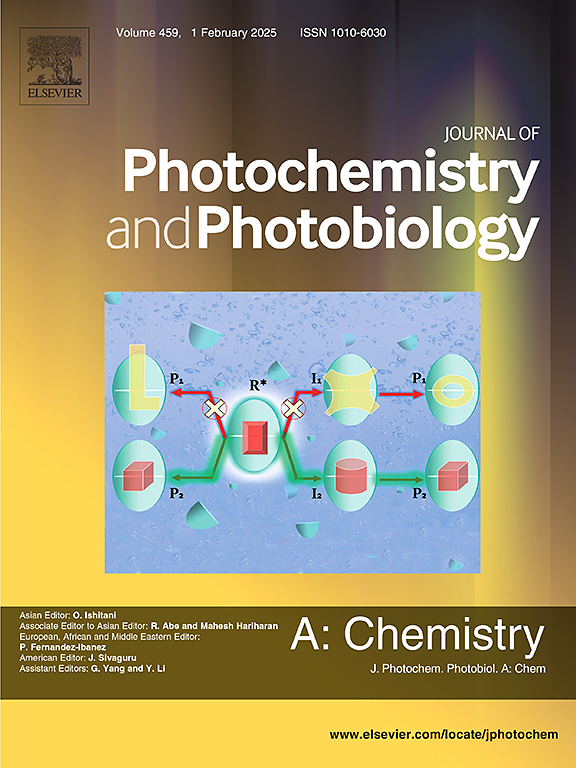B, S, N co-doped carbon dots-based highly sensitive and rapid nanoprobe for monitoring of pepsin activity in human saliva and its cell imaging
IF 4.1
3区 化学
Q2 CHEMISTRY, PHYSICAL
Journal of Photochemistry and Photobiology A-chemistry
Pub Date : 2025-02-21
DOI:10.1016/j.jphotochem.2025.116349
引用次数: 0
Abstract
Gastroesophageal reflux disease (GERD) is widespread, but screening is difficult due to its non-specific symptoms. Detecting pepsin in saliva is a non-invasive and specific diagnostic method, yet it requires enhancements in reaction time, selectivity, and sensitivity. In this study, a highly sensitive detection method has been developed for monitoring pepsin activity in human saliva based on boron, sulfur, and nitrogen co-doped carbon dots (BSN-CDs) for the first time. The manufactured BSN-CDs exhibit exceptional photoluminescent properties, high water solubility, and stability in varying salt concentrations and pH levels. The nanoprobe shows a fast response time and a wide detection range from 0 to 60 µg/mL for pepsin with a detection limit of 0.24 µg/mL, making it a valuable tool for clinical diagnostics. To our knowledge, this is the most responsive material for pepsin activity reported to date. The method’s viability was confirmed by accurately measuring pepsin in human saliva samples, achieving recovery rates between 96.0 % to 108.5 %. Moreover, the study investigates using these carbon dots for imaging HepG2 and SiHa cells, highlighting their broader biomedical potential. It concludes that BSN-CDs are promising nanomaterials for sensitive biomolecule detection and advanced imaging techniques.

求助全文
约1分钟内获得全文
求助全文
来源期刊
CiteScore
7.90
自引率
7.00%
发文量
580
审稿时长
48 days
期刊介绍:
JPPA publishes the results of fundamental studies on all aspects of chemical phenomena induced by interactions between light and molecules/matter of all kinds.
All systems capable of being described at the molecular or integrated multimolecular level are appropriate for the journal. This includes all molecular chemical species as well as biomolecular, supramolecular, polymer and other macromolecular systems, as well as solid state photochemistry. In addition, the journal publishes studies of semiconductor and other photoactive organic and inorganic materials, photocatalysis (organic, inorganic, supramolecular and superconductor).
The scope includes condensed and gas phase photochemistry, as well as synchrotron radiation chemistry. A broad range of processes and techniques in photochemistry are covered such as light induced energy, electron and proton transfer; nonlinear photochemical behavior; mechanistic investigation of photochemical reactions and identification of the products of photochemical reactions; quantum yield determinations and measurements of rate constants for primary and secondary photochemical processes; steady-state and time-resolved emission, ultrafast spectroscopic methods, single molecule spectroscopy, time resolved X-ray diffraction, luminescence microscopy, and scattering spectroscopy applied to photochemistry. Papers in emerging and applied areas such as luminescent sensors, electroluminescence, solar energy conversion, atmospheric photochemistry, environmental remediation, and related photocatalytic chemistry are also welcome.

 求助内容:
求助内容: 应助结果提醒方式:
应助结果提醒方式:


